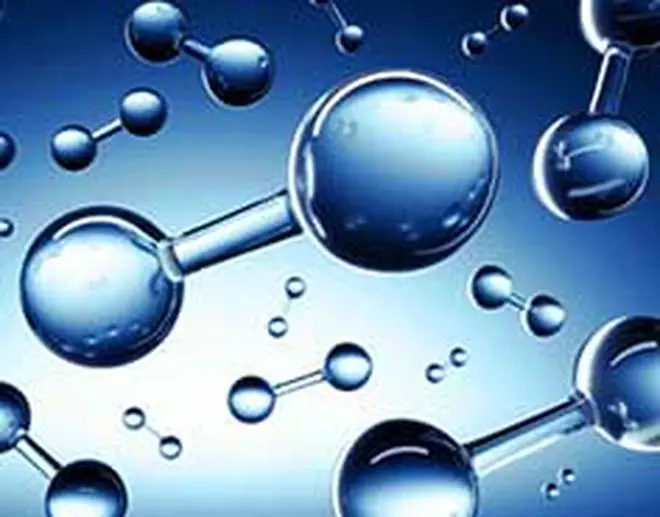

Hydrogen is prescribed as the clean fuel that will be a game changer in the fight against climate change and will solve the emission problems in “hard to abate” sectors such as steel manufacture, chemical production, aviation, shipping, and heavy transportation.
There are two streams of hydrogen production being actively considered--blue and green hydrogen. The former is produced when natural gas is split into hydrogen and CO2 either by the steam methane reforming (SMR) process or auto thermal reforming (ATR). Green hydrogen is produced via renewable-fuelled water electrolysis that frees the hydrogen from the water molecule and releases oxygen into the air.

Models of molecule hydrogen floating against blue background - H2 scientific element | Photo Credit: peterschreiber.media
The suitability of blue or green hydrogen as a future fuel is premised on how much water is consumed for their production. Currently, 2.2 billion cubic metres of freshwater is withdrawn annually for global hydrogen production. This is set to increase six-fold by 2050.
According to “Water for Hydrogen Production,” a report released during COP 28 by International Renewable Energy Agency (IRENA) and Bluerisk, global specialists in water risk assessment and management, green hydrogen made from renewables is the “most water-efficient form of clean hydrogen and should be prioritised to minimise water security threats.”
The report found that green hydrogen production has the lowest water consumption intensity at about 17.5 litres per kilogramme of hydrogen (L/kg). In comparison, blue hydrogen produced through steam methane reforming–carbon capture, utilisation, and storage (SMR-CCUS), consumes 32.2 L/kg, and autothermal reforming requires 24.2 L/kg.
The report recommends that the water factor must be integrated into hydrogen planning and project approval. More than a third of planned or operating green and blue hydrogen production projects are in highly water-stressed regions. It points out that 90 per cent of India’s existing and planned green and blue hydrogen projects are likely to be in areas which could become extremely water stressed by 2040.
Published on December 24, 2023

Comments
Comments have to be in English, and in full sentences. They cannot be abusive or personal. Please abide by our community guidelines for posting your comments.
We have migrated to a new commenting platform. If you are already a registered user of TheHindu Businessline and logged in, you may continue to engage with our articles. If you do not have an account please register and login to post comments. Users can access their older comments by logging into their accounts on Vuukle.